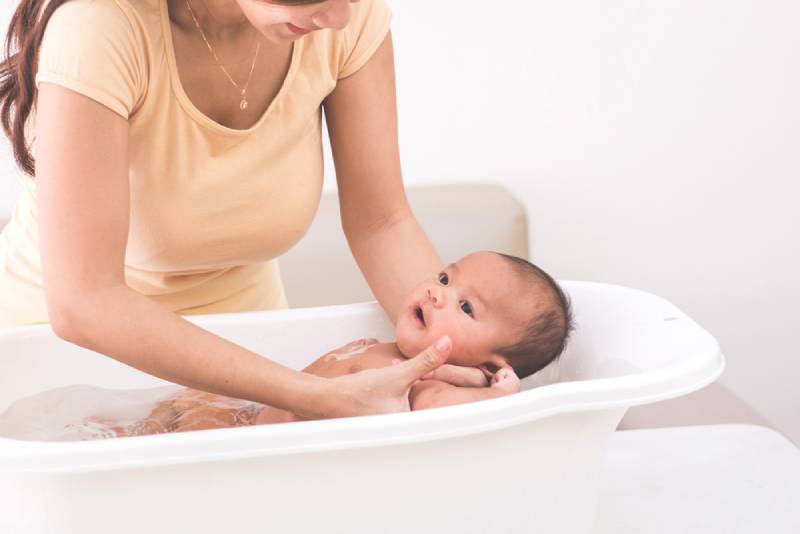Most parents are frightened of the idea of giving their baby a bath when they first get home from the hospital because they aren’t sure of how to bathe a baby properly.
The first time the baby gets cleaned up is at the hospital right after they are born, when the nurses will carefully wipe all of the blood and amniotic fluid off so as to not remove the vernix from their skin.
Vernix is a waxy substance that serves as a sort of cocoon for the baby as their still fresh body and delicate and dry skin start becoming accustomed to life outside the protection of the womb.
It helps protect the baby against all kinds of nasty germs and bacteria, effectively removing the need for a bath until the vernix itself falls off within one to three weeks.
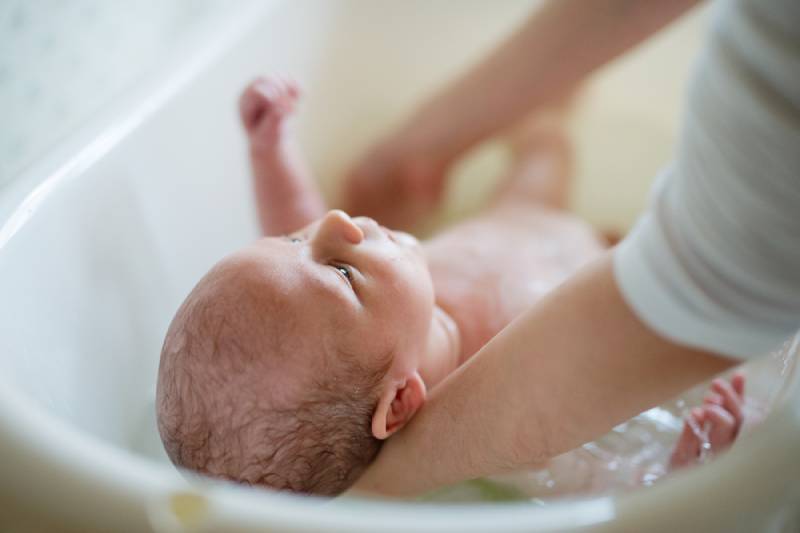
The Mayo Clinic and the World Health Organization suggest that you can give your baby’s first bath’s 24 to 48 hours after their birth.
For the initial period, you should stick to sponge baths to get them used to baby bath time and to protect their umbilical cord from getting wet.
To be absolutely safe, wait until their umbilical cord stump falls off before completely submerging their tummy, unless the doctors give you the green light to do so.
In which case, you should bathe the baby in shallow water while keeping that abdominal area dry.
Double check after bathing to see if any water ended up around the area, gently dab it dry, and apply baby powder.
The necessary steps to take during bathing
1. Get all items present and accounted for
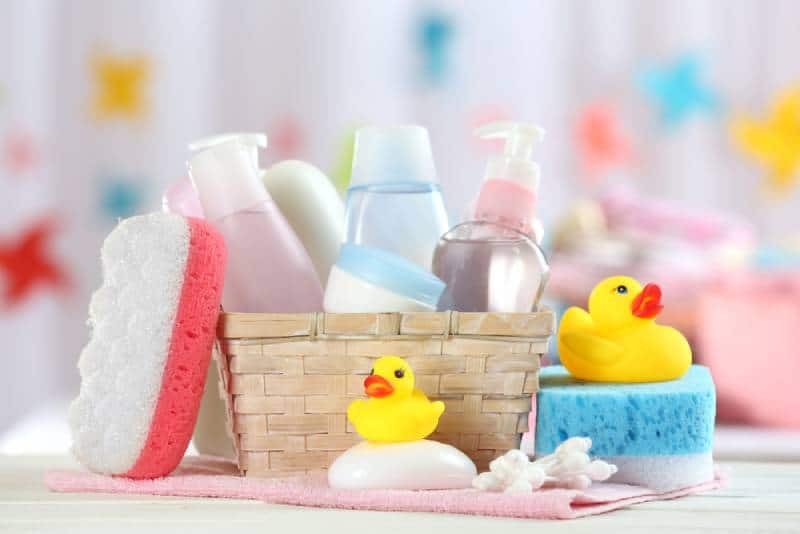
You can’t have baby bath time without everything present to clean-up afterwards. This means having a baby bath tub ready, and a changing table or a flat surface right next to the bath.
Said changing area should also contain a nice soft-towel that won’t irritate the baby’s tender skin, a soft washcloth to use during bath time and to clean the most irritation-prone areas as well as the creases and soft spots.
As for bathing supplies, get some newborn-friendly shampoo and cleansing gel, again, to keep any nasty irritations from happening or skin conditions from developing.
An optional item to have is a bottle of moisturizer in case your baby’s skin gets a bit dry during their first time in the tub.
2. Wash your own hands
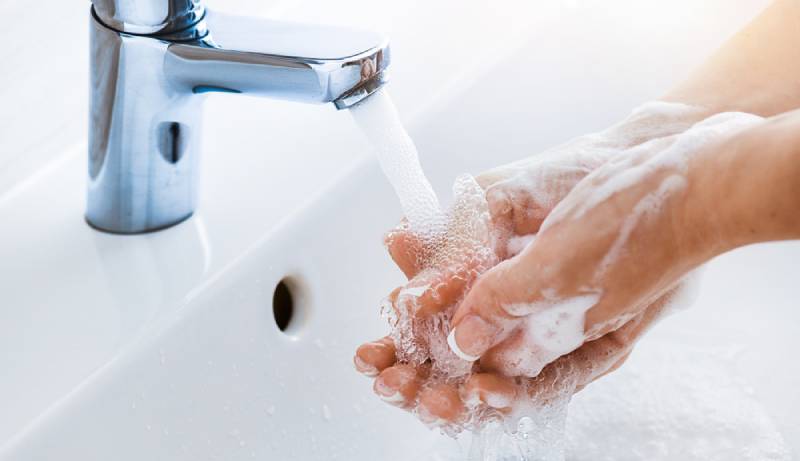
While the goal is to learn how to bathe a baby, you should also make sure you are clean before handling him or her.
That goes for any of your potential assistants as well. Make sure to use soap and rinse properly before handling the baby.
3. FIll the tub with water and warm it up
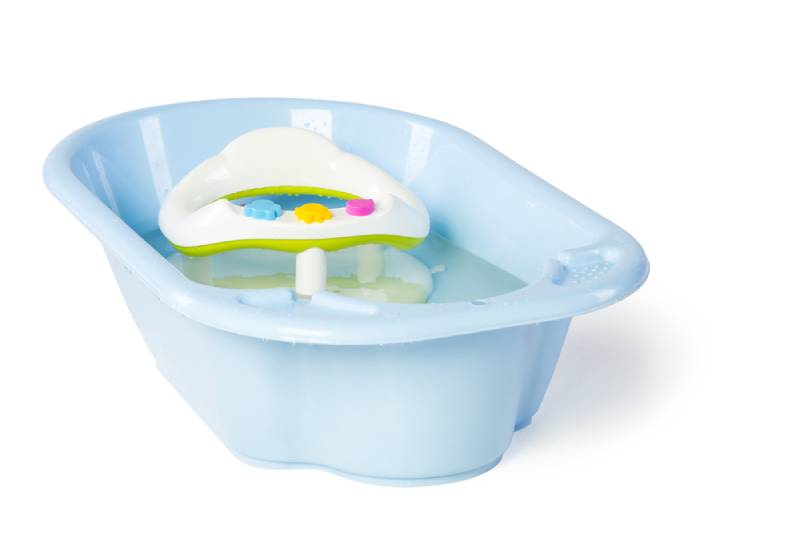
Someone should hold the baby while the other person fills the tub up. Both hands should be on deck.
Once the tub is filled, set it down in the area where you want to bathe your baby and start heating it up if you haven’t preheated the water.
Now that that’s done, you can finally start the actual bathing.
4. Lay the baby in the water gently
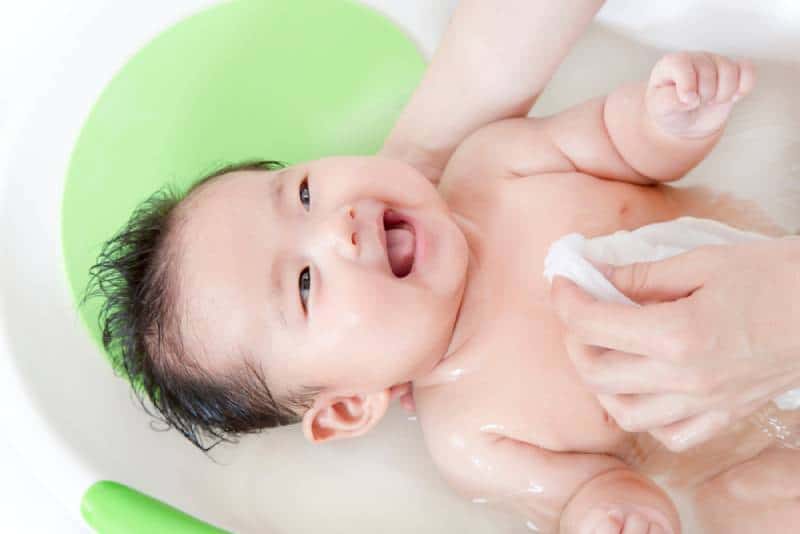
Every baby will react to their first contact with water differently. Some babies like it and some detest it and end up being cranky.
In case the water wasn’t properly heated and is either too warm or too cold, you want to know before placing your baby in the tub entirely.
That’s why it’s important to take it slow and dip them into it from the bottom up.
Plus, this way you avoid getting any water in their mouth or up their nose.
An optional method is to get a bath seat for the baby, reducing the risk of any slipping, although the tub should be more than safe enough for your little one.
5. Apply shampoo carefully and in order

This is where the soft washcloth comes in.
Dab a little bit of shampoo on it after getting your bundle of joy wet and start lathering carefully, being extremely careful around the face and ears. Keeping the water out of the baby’s ears requires some practice so take it slow.
Start from their head and work your way down to the torso, the extremities, and finally the genital and the diaper areas.
6. Time to wash off
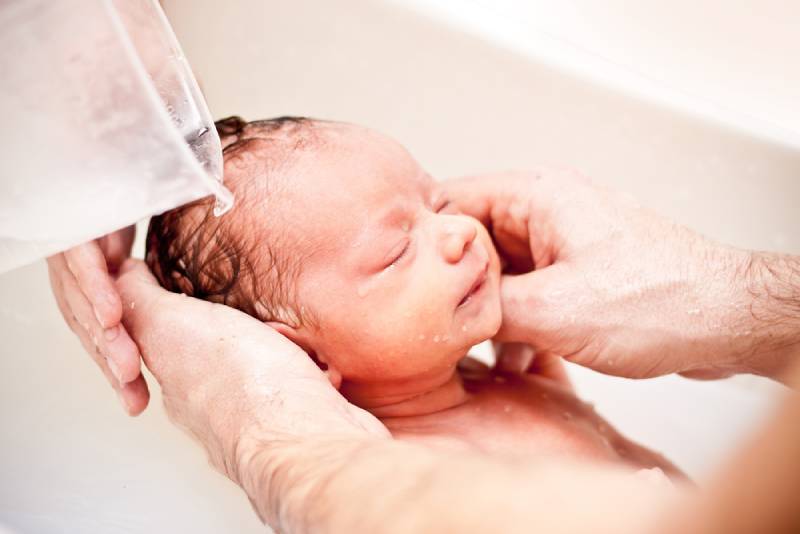
Once done, you should rinse the baby’s skin off in the same order.
Scoop some water up in a plastic cup or a similar container and pour it gently over the baby’s head to wash the shampoo away.
Use the washcloth again to gently rinse out any remaining cleaning product and leave the nether regions to last.
Don’t forget to double-check if the joint areas are clean as those can often be hard to get to.
As an added note, if your baby seems to take to the water naturally and doesn’t make a fuss about it, feel free to let them play in it for a bit.
You can even include some bath toys if you’ve got some, but only once your baby gets a bit older.
7. Drying time
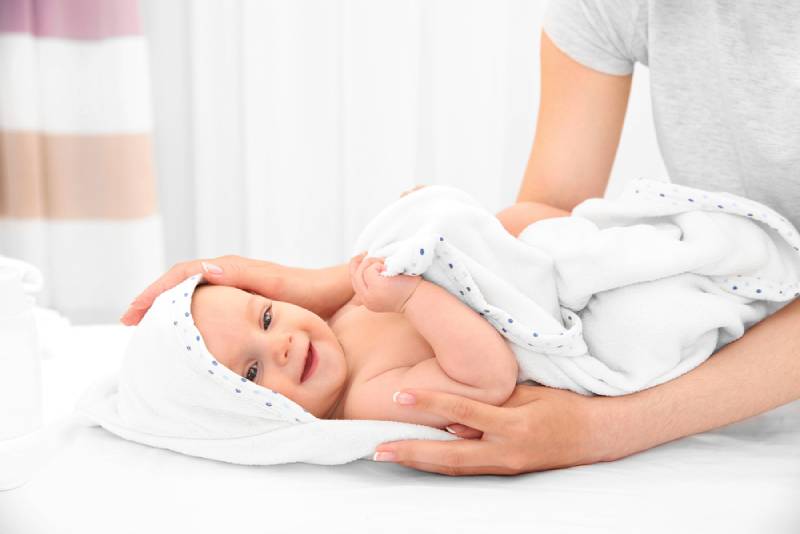
Once your baby is all nice and clean, it’s time to take him or her out of the bath.
Gently lift and place the baby in a soft and dry towel. Don’t rub them down, that’ll just irritate the skin despite the towel being soft. Instead, pat them down, dabbing the cloth on them instead of dragging it along.
It might take a bit longer, but at least the baby will be comfortable.
Once they’re dry, you can apply the moisturizer that I mentioned earlier if you bothered to pack it, making sure to cover any dry spots to reduce baby’s discomfort, after which you’re free to put that fresh diaper on them.
You could also let them linger about in their birthday suit for a bit to let their soft little bum breathe and help reduce baby rash from constantly being enclosed in a diaper.
Things to have in mind before you even start
Similar to when looking to give your baby a shower or partaking in any other potentially hazardous activity, there are several things you have to keep in mind beforehand:
1. Make sure to wait the required period out
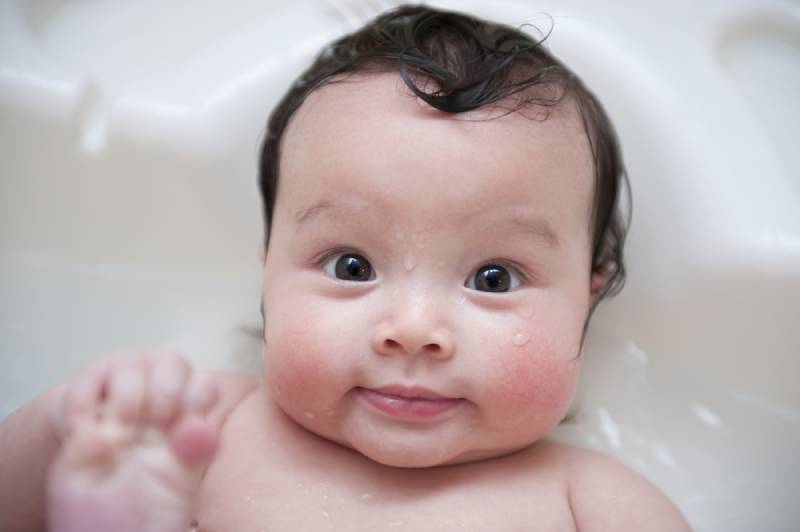
I’ll repeat this as many times as necessary, your baby doesn’t need a bath right away and it’s absolutely fine to wait a day or two before bathing baby for the first time.
The vernix will do it’s thing for that period.
This is something that was repeated to me many times and I’ll try my best to get the message across to the rest of you mamas as well.
Our little one’s safety remains our top priority at all moments, especially during baby’s bath time.
2. Get a baby tub
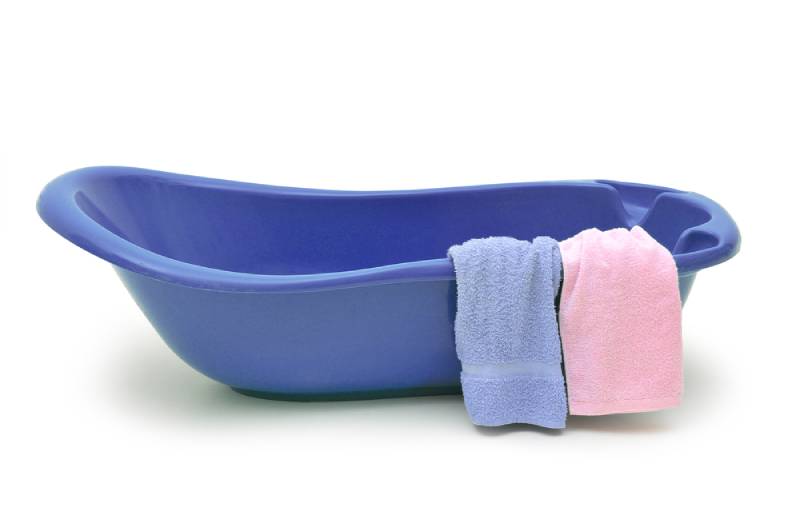
As tempting as it may sound to get into your own bath tub with the baby, I’d advise against it.
You’ll need a lot more hands and you introduce the risk of slipping with your hands occupied, leaving the potential for injury to both you and the baby.
That’s something we want to avoid, no matter how many wholesome pinterest posts we see about mommy and baby bath tub bonding time.
A baby tub gives you a more compact space to work in and leaves a lot less to chance.
Plus you can access a flat surface to use as a changing table much easier than figuring it out in your bathroom.
3. Make sure the water is warm
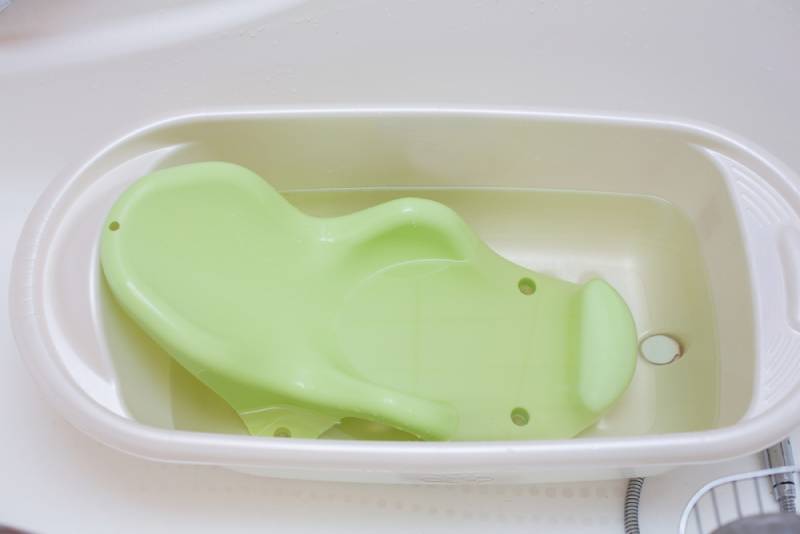
Cold water is not something you want to be putting your baby into as you risk giving them hypothermia or worse.
Your little angel requires a lot of attention during this rather delicate period in their lives.
A newborn baby’s body is still rather sensitive, vernix or no, and the bath water should be as close to their body temperature as possible.
That’s why one of the core things to remember when learning how to bathe a newborn is to always make sure you have warm water in the tub.
Get a small water heater to make the process easier if you need to, so you can get the water temperature just right (around 100 degrees Fahrenheit).
4. Only use baby shampoos that are specifically designed for a baby’s delicate skin
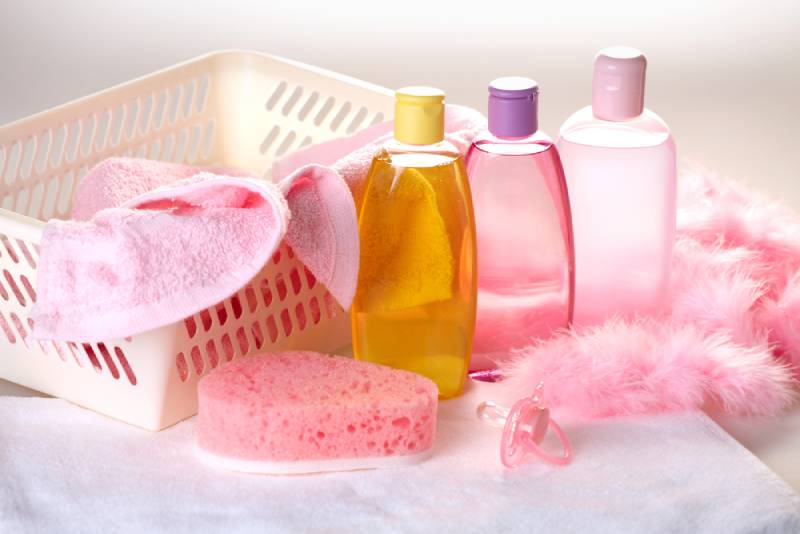
There’s not much to talk about for this one since it comes down to your newborn baby’s soft and delicate skin once again as well as any other sensitive areas that stronger shampoos might irritate, like the baby’s eyes, their genital area, or their diaper area.
RELATED: The 15 Best Shampoos For Kids In 2020
5. Have all of your items handy

Before any bath begins, you should make sure that your changing area is properly sorted and that everything you need is within arm’s reach.
You don’t want to be stuck in the middle of bath time and then realize that you forgot the washcloth or a clean diaper to put the baby in, you’ll only end up with a rather slippery baby that’ll drip all over the floor as you scramble to find the towel you forgot or something else.
6. Keep baby’s head above the water at all times
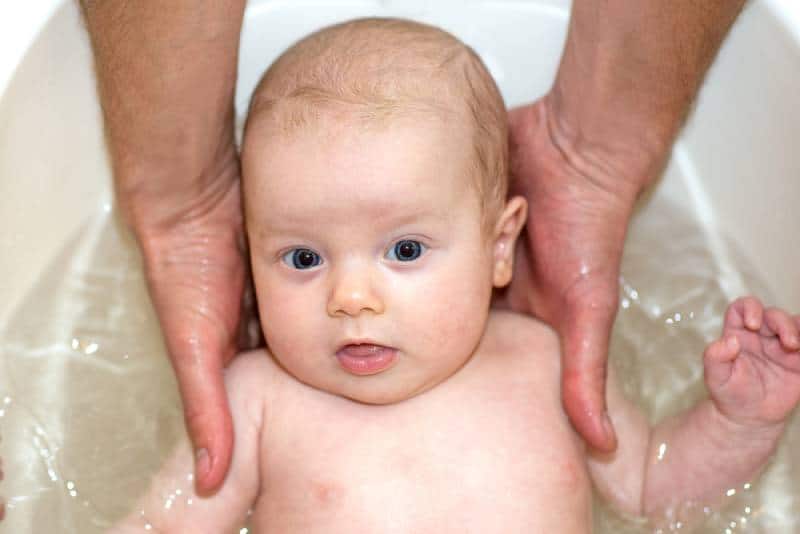
You don’t want your baby swallowing a load of dirty, shampo-laden water or risking something worse.
You have to be attentive during this time and should exclude any other distractions from the room while you’re bathing your child.
Have an assistant around like your partner, a friend, or your older son/daughter. Whoever is willing to lend a hand.
It’ll keep the process a lot safer and make it a lot more fun for both the participating baby and their bath givers.
In Conclusion
And there you have it, you’ve learned how to bathe a baby.
Nothing too complicated now, was it?
It might seem so at first since it’s a lot of information to process, but a lot of it becomes redundant once you get the hang of it and learn how to organize.
The key thing to remember is to make sure every move you make during bath time is gentle and to have all the items you need on hand and you should be ready to go.
Once your kids get older, you can even give them bubble or detox baths that are loads of fun and healthy at the same time. But until then, I suggest you stick to the tips discussed above.
I hope I’ve helped you out with this and that your baby’s bottom is all the happier for it.
References:
- NHS staff, “Washing and bathing your baby.” published on the NHS website in 2018.
- American Academy of Pediatrics, “Bathing your newborn”, published on Healthy Children on November 2009.
Like this post? Please share or pin it for later. You can also stay in the loop and follow us on Facebook, Instagram or Pinterest.

This post contains affiliate links. Please see our full disclosure for more info.

